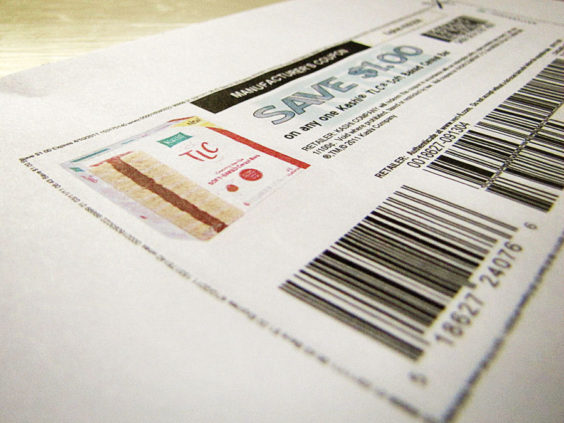If the stereotypical couponer is someone with a low-paying job who’s struggling to get by, the actual typical couponer would like you to know that they’re doing quite well, thank you.
The printable coupon provider RevTrax released a study today, in which it found that the more money a person has, the more likely they are to use printable coupons. “Areas with higher median income, more bachelor’s degrees, lower unemployment, and higher median age tend to have better activation rates,” the report reads, hence “dispelling the notion that consumers with lower incomes and less desirable job situations are the ones activating a higher percentage of coupons.”
It’s not surprising that lower-income people who may not have access to a computer aren’t printing a whole lot of coupons. And it’s not particularly surprising that higher-income people redeem more coupons overall – it’s a counterintuitive trend that’s been noted before. In April, a MarketTools survey found that nearly half of higher-income people said they used coupons nearly all the time, compared to 38% of lower-income people. A 2010 survey conducted by Coupons.com concluded that “digital coupon users are more educated and have higher household incomes than newspaper coupon users and the overall general public.” And back in 2009, Nielsen released research that found more affluent consumers “are considered super heavy coupon users,” while “those likely to be low- or non-coupon users: low-income, one-member households, male-only head of households, African-Americans and Hispanic consumers, residents in rural and struggling urban areas.”
But those studies were conducted by simply asking questions and compiling people’s answers. RevTrax employed a much more complicated methodology for its report. “RevTrax recorded the locations of a large amount of digital coupon views and prints from January to April 2012,” it explains. “Each view and print location was linked to a county, and then each county was linked to numerous county characteristics.” Demographic data associated with those counties were then used, to make inferences about the types of people who were printing and using those coupons.
It may seem like a complicated way to reach essentially the same conclusions as the earlier studies. But it also pulls back the curtain a bit, revealing some of what companies like RevTrax know about us – such as “the locations of a large amount of digital coupon views and prints.” Many printable coupon users have seen the fine print on their coupons, including the date and time the coupon was printed, and possibly even their computer’s IP address. But that’s just the tip of the iceberg. A New York Times article from 2010 revealed how RevTrax and other printable coupon providers can embed your Facebook ID into a coupon, or include search terms that you used to find the coupon. “A retailer could know that Amy Smith printed a 15 percent-off coupon after searching for appliance discounts at Ebates.com on Friday at 1:30 p.m. and redeemed it later that afternoon at the store,” the Times reports.
It’s complicated, and perhaps a little creepy, but even RevTrax isn’t omniscient. It was RevTrax, after all, that was behind the ill-fated Toys “R” Us printable coupon earlier this month (read: “Toys ‘R’ Oops“). Cunning couponers took advantage of a RevTrax weakness that they’ve exploited in the past, using different internet browsers, and clearing their browsing history and cookies in order to bypass the coupon’s print limit and print as many as they wanted.
So the next time RevTrax does a study that involves pinpointing “the locations of a large amount of digital coupon views and prints”, it may well be studying a single household – one that made a killing at Toys “R” Us.
(Update: Check out the full-year 2012 coupon redemption statistics here.)
















